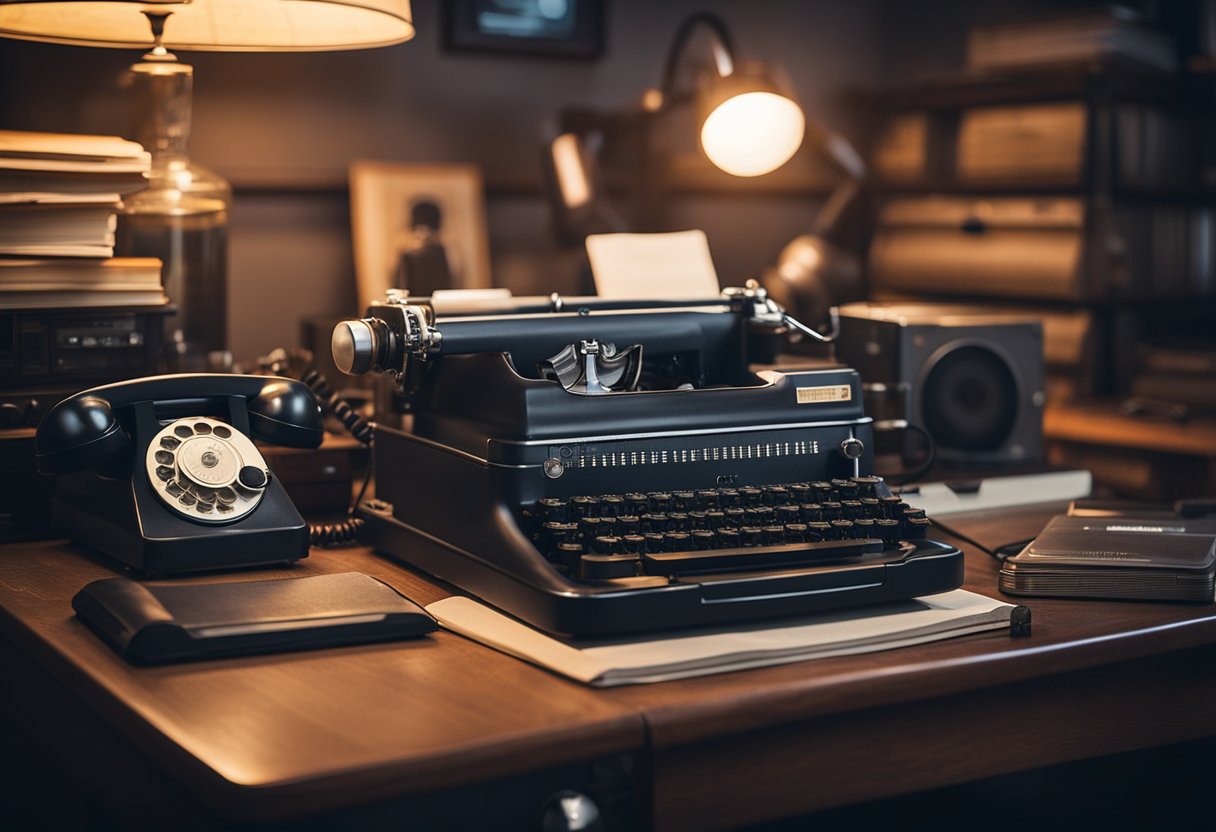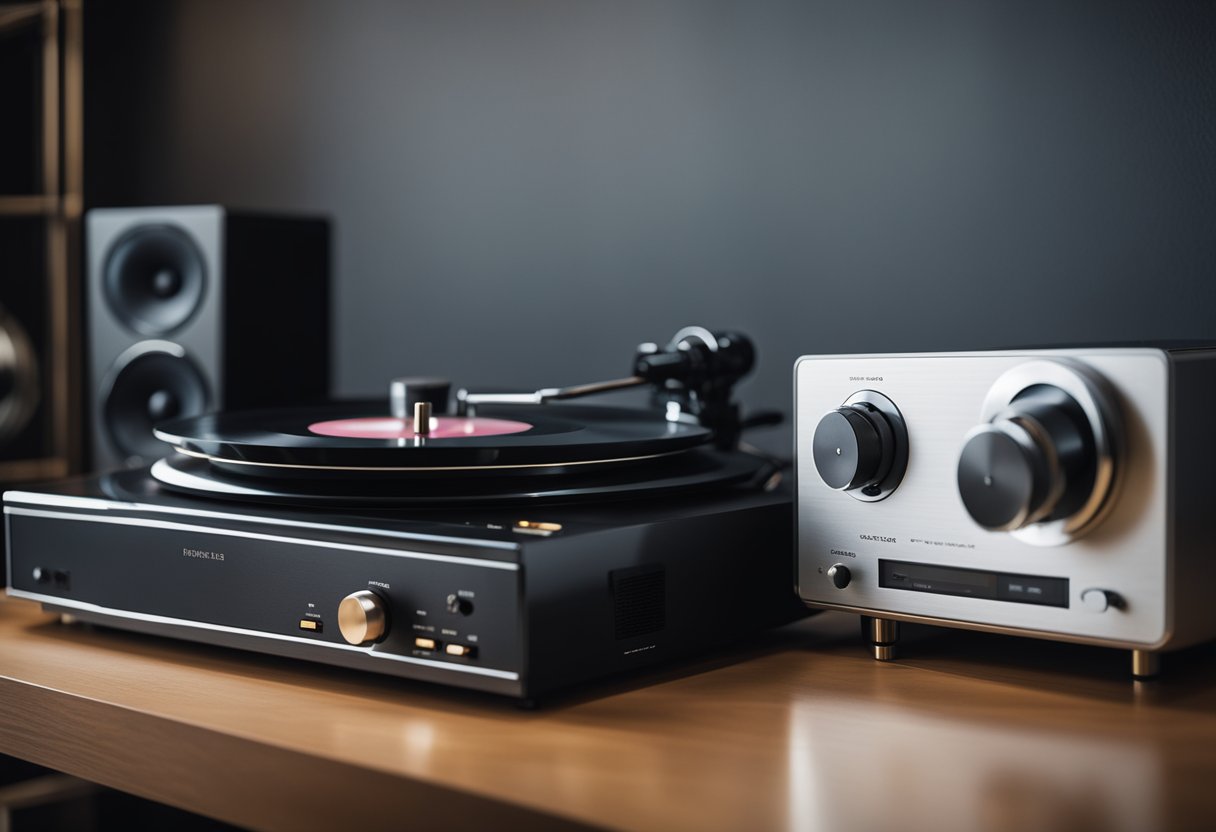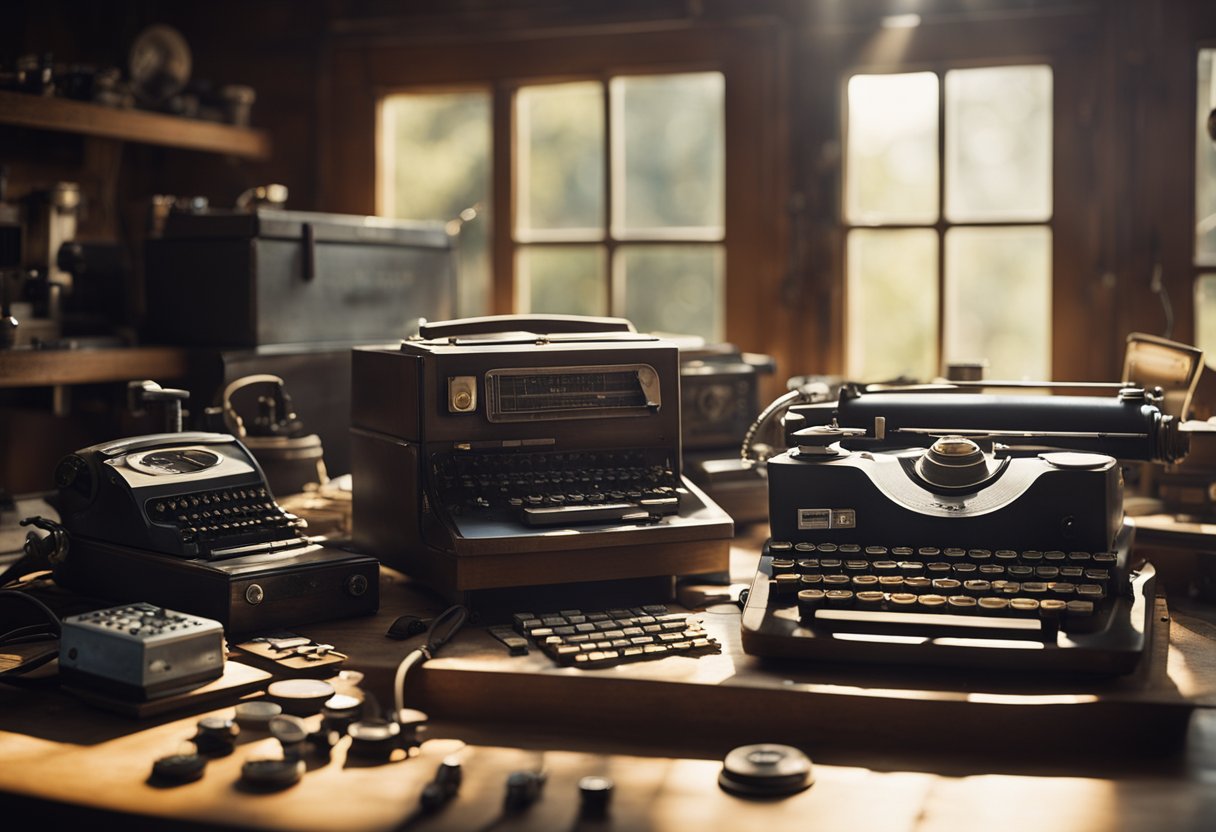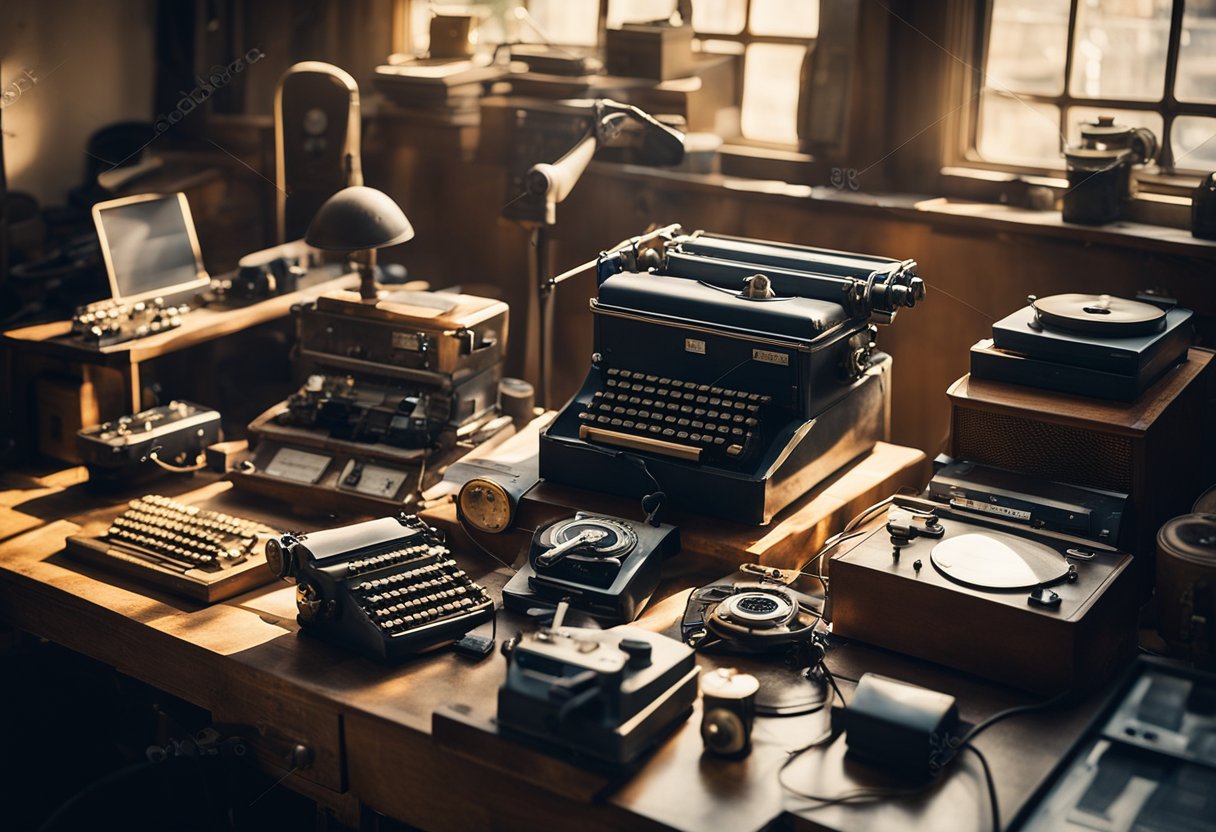Exploring The Renaissance of Analogue Technology

Updated On: March 23, 2024 by Maha Yassin
We are witnessing a fascinating technological revival, where the tactile experience and nostalgic appeal of analogue devices are gaining traction again. In a world saturated with digital advancements and ephemeral electronic trends, there’s a growing affection for the authenticity and simplicity of vintage technology. This resurgence is not just about reliving the past; it’s also about reconnecting with the tangible, often more human aspect of technology that has been lost in the transition to the digital age.
Our appreciation for analogue technology is not merely a fad; it’s an emergent cultural movement that reflects a collective yearning for an era where craftsmanship and durability were highly valued. It’s also a response to the transient nature of modern gadgets and a stand against the growing sense of obsolescence built into today’s tech products. This analogue renaissance encompasses various domains, including music, photography, and gaming. It speaks to older generations who grew up with these technologies and younger ones who are discovering them for the first time.
The Appeal of Analogue Technology

The resurgence of analogue technology speaks volumes about our collective yearning for nostalgia and authenticity. As we navigate a digital age, there’s a deep-seated appreciation for the craftsmanship that goes into creating these tactile pieces of history.
Rediscovering Vinyl Records
Vinyl records testify to the rich, warm sound often lost in digital formats. For many, it’s not just about the audio quality but the ritual of setting the needle onto the record and the physical collection of albums. The artwork, liner notes, and occasional crackle add to the allure, making each vinyl a cherished possession redolent with nostalgia.
The Charm of Typewriters
Typewriters invoke a sense of nostalgia, harking back to a time when writing required deliberation and focus. The distinct clack of the keys and the immediacy of ink-hitting paper appeal to those who crave a more hands-on writing experience. The charm of typewriters lies in their simplicity and their role as a creative tool that has been irreplaceable for decades.
The Resilience of Film Cameras
Film cameras hold a special place in photographers’ hearts who value authenticity and the physicality of capturing images. Each photograph is a result of a meticulous process involving choice of film, exposure, and often a darkroom development that gives a unique quality to images. The grain, colour rendition, and dynamic range are just attributes that make film photography a resilient art form in the digital era.
Analogue vs Digital: A Comparative Analysis

Before we explore the contrasting worlds of analogue and digital technologies, let’s understand that this discourse hinges on two key aspects: the human engagement each technology elicits and their environmental impacts. As we navigate our comparative analysis, we contend with tangible experiences, dedicated craftsmanship, and the intertwined ecological tenets of both domains.
Tangible Experiences in a Digital Age
In an era inundated with digital cameras and the ephemeral nature of virtual reality, analogue devices offer a sense of tangibility. Vinyl records and film cameras provide a physical interaction that smartphones often cannot. Handling a vinyl album or loading film into a camera instils a feeling of permanence and ownership that digital files may lack.
Patience and Attention to Detail
Analogue processes necessitate patience and attention to detail that digital alternatives typically circumvent. The meticulous process of developing film from a digital camera, for example, or the careful calibration of analogue recording equipment, demands time and nurtures a deliberate mindset that is less prevalent in the instantaneity of digital creation.
Craftsmanship and Sustainability
The craftsmanship behind analogue technology often speaks to a commitment to sustainability. Analogue devices, built to last, contrast with the transient nature and planned obsolescence prevalent in some digital technology manufacturing. To promote sustainability, analogue technology aligns with platforms like Connolly Cove, which champions the preservation of traditional crafts and sustainable practices globally.
Generational Trends in Technology Usage
As we examine the shifts in how different ages interact with technology, we particularly notice the unique stance of Generation Z towards vintage technology.
Generation Z and Analogue Nostalgia
Generation Z, born from the mid-1990s to the early 2010s, has grown up in the digital age. Our constant connectivity through smartphones and social media contrasts sharply with the era of analogue technology. Yet, many among us are attracted to vintage tech. It embodies a simplicity in communication and a tangible authenticity that seems lost in today’s fast-paced digital environment.
We are finding that tactile experiences such as typing on a typewriter or developing a photograph in a darkroom offer a form of mindfulness, a break from the constant ping of messaging apps and emails. Our integration of analogue technology elements into modern life signals a blend of eras—bringing forward the personal touch of handwritten letters into a world where instant messaging reigns supreme.
This resurgence isn’t solely about functionality; it’s also driven by aesthetic and emotional appeal. The designs of retro devices starkly contrast the sleek, minimalist look today’s technology often sports. Plus, there’s a sense of individuality and novelty in using a device that stands out from the sea of identical touchscreens.
For us, embracing vintage-inspired gadgets isn’t just a fad. It’s a meaningful choice that reflects a deeper longing for a more personal and deliberate approach to communication. We are redefining our technological experiences, merging the best of both worlds—honouring the past while we continue to innovate for the future.
Analogue in the Arts
We can observe a palpable surge in the adoption of analogue technology methods within the arts, marking a return to hands-on creativity and a celebration of authenticity.
Creativity Through Tactile Media
We find a renewed appreciation for the tactile nature of analogue media in today’s digital world. Artists are reconnecting with the physicality of their media, be it through brushing paint onto a canvas or chiselling a sculpture. This hands-on process is often cited as enhancing creativity, allowing artists to interact with their materials directly. Analogue practices in the arts, embodying textures and imperfections, affirm the cultural shift towards valuing the ‘human touch’ in creation.
Film Photography and Artistic Expression
In film photography, artists embrace the unpredictability and the authentic characteristics of analogue images. Film’s resurgence has brought a unique aesthetic that digital mediums find hard to replicate; the distinct grain, dynamic range, and rich tonality of film photographs enrich artistic expression. These qualities speak not only to the creativity of the artists but also to a wider cultural movement re-evaluating and honouring the foundations of film photography.
The Impact of Social Movements on Technology

As we delve into the intricate relationships between social movements and technology, we recognise a distinct pattern: social movements often catalyse technological adoption and the revival of seemingly antiquated tech. Within this context, community efforts and cultural movements have directly influenced the resurgence of vintage technology.
Community and Cultural Revival
Social movements harness the power of collective identity and shared experiences to forge a strong sense of community. For example, Generation Z has shown a propensity towards embracing technologies that encapsulate tradition and culture. This generational shift has played a pivotal role in the return of vinyl records and analogue cameras, bringing about a communal and cultural revival that counters the digital saturation of today’s society.
Analogue devices’ aesthetic and tactile nature resonates with the desire for authenticity and physicality in cultural experiences. This resurgence isn’t simply nostalgia but a conscious choice by communities to preserve and celebrate heritage in a digital era. In this way, the influence of social movements on technology is profound, redefining how we engage with tools from the past and integrating them into the fabric of modern culture.
Environmental Considerations

As we embrace the resurgence of vintage technology, it’s crucial to consider its environmental impact. Striking a balance between nostalgia and sustainability is key.
Eco-Friendly Aspects of Vintage Tech
Vintage technology often embodies innovation in an eco-friendly package. One prominent aspect is its potential for reducing waste, as we repurpose and reuse devices built to last. Older technology tends to have a longer lifespan compared to some modern gadgets that are designed for obsolescence. This sustainability in design minimises the frequency with which we discard tech, thereby reducing tech-related waste.
Furthermore, enthusiasts who revive vintage technology contribute to a circular economy. They breathe new life into old gadgets, from record players to film cameras, keeping them operational and out of landfills. By valuing repairability and advocating for maintenance, we can diminish our environmental footprint and promote a culture of sustainability.
Vintage technology does not require the same energy-intense manufacturing as newer devices, potentially lessening the load on our environmental resources. Purchasing pre-owned equipment means one less new item produced, thus conserving the energy and raw materials that would have been used in production.
Economics of Resurgence

In exploring the vintage technology resurgence, it’s essential to understand the economic factors driving this phenomenon. We will uncover why there is a growing market for products like vinyl records, typewriters, and film cameras.
The Market for Vintage Gadgets
The demand for vintage gadgets has created a niche yet robust economic segment. Consumers are attracted to the tangible experiences these devices offer, a shift from the intangibility of digital products. Amid this renewed interest, vinyl records have witnessed a remarkable comeback. In today’s digital age, they provide a warmth and physicality that resonates with both older generations and younger audiophiles who crave an authentic sound experience.
Typewriters have seen an upturn in popularity for similar reasons. The appeal of a mechanical and tactile typing process has revitalized interest in these gadgets, igniting a passion for collecting and practical use. The admirers often value the deliberate typing process that typewriters require and the satisfaction of creating something with a direct physical impact.
Film cameras have returned to the scene powered by enthusiasts who favour the hands-on process and film photography’s unique, unpredictable quality. This resurgence underscores a broader economic trend where nostalgia and a desire for differentiated products drive market growth.
This economic resurgence is fuelled by individual consumers and businesses that innovate and capitalise on the vintage trend. New models of these classic technologies, which incorporate modern enhancements while honouring their traditional roots, are evidence of innovation at play within this market.
The economics behind this resurgence is a blend of emotional drive and tangible quality, defying the purely digital trajectory of recent decades. Our examination reveals that this trend does not merely hinge on nostalgia but is underpinned by the discerning consumer’s desire for authenticity and sensory engagement.
The Role of Major Events
In exploring why vintage tech has seen a resurgence in interest and usage, we find that major events, such as the pandemic, have played influential roles.
The Pandemic Effect on Analogue Technology Popularity
The pandemic created a cultural pivot point, where a blend of nostalgia and a reconnection with simpler times became a form of solace. During lockdowns, the increased time at home led many to rediscover analogue technologies. This period of global unrest cultivated a desire for tactile experiences and a break from the digital world, which can be seen in the revival of vinyl records, film photography, and even vintage gaming consoles. The tactile nature of these technologies contrasts the ethereal nature of digital consumption, sparking a wave of nostalgic appreciation that is simultaneously old and new.
The restrictions and isolation expedited a collective reflection on how we interact with technology, prompting us to reconsider the relentless pace of digital consumption. Our newfound appreciation for analogue technology experiences reminds us of the unique textures of past eras that digital formats sometimes struggle to encapsulate.
The focus during the pandemic on crafting, DIY, and personal projects demonstrated a resurgence of analogue activities, with vinyl sales surging and social media exploding with images of home-developed film photographs. Physical media provided entertainment, a sense of accomplishment, and a physical connection to media that streaming services could not.
In essence, the pandemic acted as a stirrer of nostalgia, reminding us of the perennial appeal of analogue technology and its ability to provide a meaningful respite from our screen-laden lives.
Regional Influences on Analogue Technology

As we observe technology’s evolution, regional influences often shape its development and resurgence. Cultural identity and local traditions frequently influence how technologies are maintained, adapted, and celebrated within a community.
Analogue Renaissance in Pennsylvania
Pennsylvania has played a unique role in the analogue Renaissance with its rich history and diverse communities. The state’s deep-seated traditions contribute to a surge in vintage technology’s popularity.
Community Engagement
Pennsylvania is home to thriving communities that are revitalising analogue technology. Local establishments like record shops and film photography stores have become hubs for fans, where shared knowledge fosters a greater appreciation for the classic warmth of analogue sounds and images.
- Vinyl Records: A staple of Pennsylvania’s music culture, vinyl records have seen a resurgence as collectors and music enthusiasts seek out the tangible experience and warmer sound of analogue recordings.
- Film Photography: The tangible nature of film captures the essence of moments in a way that digital cannot, leading enthusiasts in Pennsylvania to resurrect the craft, appreciating its meticulous nature and the skill required.
In Pennsylvania, tradition and modern life coexist, ensuring that vintage technology is not just a pastime but an integral part of our ongoing cultural narrative. By embracing this analogue technology renaissance, Pennsylvanians celebrate more than just the resurgence of older technology; they’re honouring a legacy that has defined much of the region’s technological journey.
Perspectives of Industry Leaders

As technology evolves, industry leaders share valuable insights into the analogue technology shift’s impact on innovation and tradition.
Insights from CEOs on the Analogue Shift
We’ve engaged with CEOs renowned for driving innovation, and they are recognising the appeal of combining the new with the old. This integration honours tradition while offering unique user experiences. For example, a CEO of a tech firm pointed out the importance of tactile experiences that digital products often lack. They suggest value in the physical interaction with devices, which brings a sense of nostalgia and human connection often missing in today’s touchscreen world.
Moreover, we’ve encountered several CEOs who advocate for the balance between digital convenience and analogue authenticity. They believe that to stay ahead, companies must acknowledge the consumer’s desire for products that feel more personal and less ephemeral. This isn’t just about looking back; it’s about bringing the best of the past to enhance the future.

FAQs
In exploring the rebirth of analogue technology, we unravel key drivers and implications for consumers and the wider tech industry. Let’s illuminate these aspects through your most pressing queries.
What factors are contributing to the resurgence of analogue technology?
Returning to analogue garners momentum from the desire for tangibility and warmth in our experiences, which are often attributed to vintage-inspired tones. There’s also an increasing preference for customisation, where analogue devices offer a hands-on approach that digital simply can’t replicate.
How are vintage electronics influencing modern design aesthetics?
Modern design aesthetics embrace minimalism and functional beauty, a nod to the retro appeal of vintage electronics champions. By integrating classic elements with contemporary innovation, designers are striking a balance between nostalgia and forward-thinking usability.
In what ways does analogue equipment surpass its digital counterparts in performance or experience?
Analogue equipment offers an authentic appeal that some argue surpasses digital, especially in the rich, intricate sounds of analogue audio and the distinctive feel of photographing with film. Enthusiasts often cite the organic interaction and unique outcomes as part of the superior experience.
What role does nostalgia play in the growing preference for analogue devices?
Nostalgia is a potent force, linking us to simpler times. In our digital age, the nostalgic allure of analogue devices brings back the essence of past eras and personal histories, creating a sentimental bridge to the present.
How is the comeback of analogue technology impacting environmental sustainability?
Analogue devices often require fewer resources and have a longer lifecycle, which can contribute positively to environmental sustainability. However, the resurgence must still navigate environmental concerns tied to production and waste, pushing for responsible manufacturing and recycling practices.
What are the implications of analogue’s revival for the future of consumer technology?
The revival of analogue signals a shift in consumer values, possibly steering future technology towards blending the digital with the tactile. This could lead to more diverse technological ecosystems that honour innovation and tradition, shaping how we interact daily with technology.






